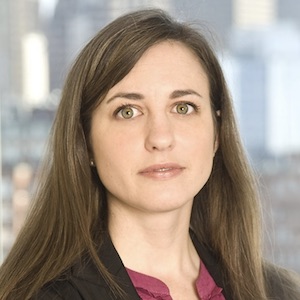The new set of rules aims to make the Commonwealth a more attractive venue for patent litigation by streamlining patent cases.

Massachusetts map. Source: Deposit Photos.
On June 1, 2018, the new patent local rules went into effect in the District of Massachusetts following a substantial overhaul that began over one year ago. In January 2017, the judges in D. Mass. formed a committee which included ten local patent litigators to advise the court on revising its practices specific to patent litigation in the district. The final draft of the proposed rules was released for public comment from December 2017 through February 2018, giving other patent litigators in the district and interested parties a first glimpse of the new rules and the ability to weigh in on their implications. This week the court announced its final version of the rules, which will apply to all cases for which a scheduling order as yet to issue.
The new set of rules aims to make the Commonwealth a more attractive venue for patent litigation by streamlining patent cases. The new proposed rules are focused on efficiency, reaching outcomes more quickly, and achieving consistency across the entire bench. The last version of Local Rule 16.6 acted more like a guide, suggesting issues that the parties should consider and offering a template for a schedule. That template, however, was not mandatory and resulted in a case-by-case approach by both the bench and the bar. In contrast, new Local Rule 16.6 requires a schedule that—absent extraordinary circumstances—will apply. In addition, the proposed rules bring this district in line with several other courts around the country that have adopted patent-specific procedures.
Key Takeaways
- Trial times. Under the new rules, the court must schedule a trial within 24 months of the initial scheduling conference—a rule that is unique from other popular patent litigation venues such as the Eastern District of Texas and the Northern District of California which do not specify a particular time-to-trial after the initial scheduling conference. The court has been unpredictable in the past on setting trial dates, with the median time being a little less than three years and some cases taking more than five-and-a-half years to get to trial.
- Markman A key event in any patent case, Markman hearings allow the parties to set forth their positions as to the meaning of claim terms and the scope of the patent for the judge. Under the old rules, the timing of the Markman hearing was very inconsistent, ranging anywhere from four to thirty months from the initial scheduling conference. Now, Markman hearings will be held within nine months. The advantage of reaching the Markman stage more quickly is that it sets the terms for expert discovery and trial. Obtaining a faster resolution on “What does the patent-in-suit mean?” ostensibly helps everyone and could materially impact the efficacy of early alternative dispute resolution.
- Timing on Markman rulings still a question mark. The new rules do not address when the Markman ruling will be issued, but providing a timeline for judges to issue their claim construction rulings is not typical in local patent rules. The bench, however, will need to issue a decision in a timely manner or it will run the risk of throwing off the timing of the entire case.
- Automated patent disclosures. The new rules provide more details on what needs to be included within the parties’ preliminary contentions (i.e., the automatic patent-related disclosures for infringement and invalidity) and also what needs to be produced with them. These updates bring the District of Massachusetts more in line with other jurisdictions and are not unusual in courts with a heavy patent docket. These automatic disclosures are also useful in short-circuiting discovery disputes by specifying the documents to which the parties are entitled.
- Amending disclosure. Under the proposed rules, if a party wants to amend its preliminary disclosures, it can only do so by leave of court and must make a timely showing of good cause. For example, the patent holder must lay out in its contentions how a device infringes just 21 days after the initial scheduling conference. In other words, these contentions are still preliminary. During the course of discovery, the patentee will receive more information and build its case accordingly. In order for a party to supplement its contentions, it will need to move the court. This rule is highly unusual, as parties can typically amend freely up to a certain point in the case, such as fourteen days after a Markman order issues or after fact discovery closes. Here, the proposed rule does not allow for a period of time for a party to make legitimate amendments without going to the court every time, which could slow down the discovery process. The court, however, has provided some indication of when it believes amendments are appropriate, including if the party does not succeed on its claim construction position and the discovery of new information that otherwise could not have been reasonably identified or located earlier.
- Crackdown on witnesses. The court has made it clear that Markman hearings will include attorney argument only, unless ordered by the court. Under the old rule, parties could indicate if they wished to call witnesses, including experts. This is another example of the bench streamlining the processes for patent litigation by cutting back extraneous fat. Expert witness testimony, however, may be incorporated into the attorneys’ arguments as the new rules provide the parties with the opportunity to depose expert witnesses who provide declarations in support of opening claim construction briefs.
- Fact and Expert Discovery. In an effort to keep discovery on track, the new rules require that fact discovery closes at the later of fifteen months after the initial scheduling conference or sixty days after entry of the court’s claim construction ruling. Expert discovery closes at the later of eighteen months after the initial scheduling conference or ninety days after entry of the court’s claim construction ruling.
- Relying on counsel as defense. The new proposed rules include a section related to the advice of counsel defense to willful infringement. This new set of mechanisms spells out what a party needs to disclose and when to disclose it. While typical in other jurisdictions, these disclosure rules are brand new to the District of Massachusetts. If a party fails to adhere to the schedule for disclosing this type of information, they will be precluded from relying on advice of counsel later on.
In a post-TC Heartland era, litigants may have fewer choices as to where to fight their legal patent battles. They do, however, still have choices. It remains to be seen whether new Local Rule 16.6 will be the magnet the bench hopes it will to draw more cases here to Massachusetts. In all events, you can find new L.R. 16.6 on the Court’s website here.

![[IPWatchdog Logo]](https://ipwatchdog.com/wp-content/themes/IPWatchdog%20-%202023/assets/images/temp/logo-small@2x.png)


![[Advertisement]](https://ipwatchdog.com/wp-content/uploads/2024/04/Patent-Litigation-Masters-2024-sidebar-early-bird-ends-Apr-21-last-chance-700x500-1.jpg)

![[Advertisement]](https://ipwatchdog.com/wp-content/uploads/2021/12/WEBINAR-336-x-280-px.png)
![[Advertisement]](https://ipwatchdog.com/wp-content/uploads/2021/12/2021-Patent-Practice-on-Demand-recorded-Feb-2021-336-x-280.jpg)
![[Advertisement]](https://ipwatchdog.com/wp-content/uploads/2021/12/Ad-4-The-Invent-Patent-System™.png)







Join the Discussion
One comment so far.
Michael J. Feigin, Esq. http://PatentLawNY.com
June 11, 2018 11:18 amHi,
With the recent Supreme Court decision requiring suing corporations where they reside (Hertz Corp. v. Friend) it seems not to matter as much. You can’t sue a company in MA unless it’s based there. It seems the streamlining was thought of before the court case was decided … no?